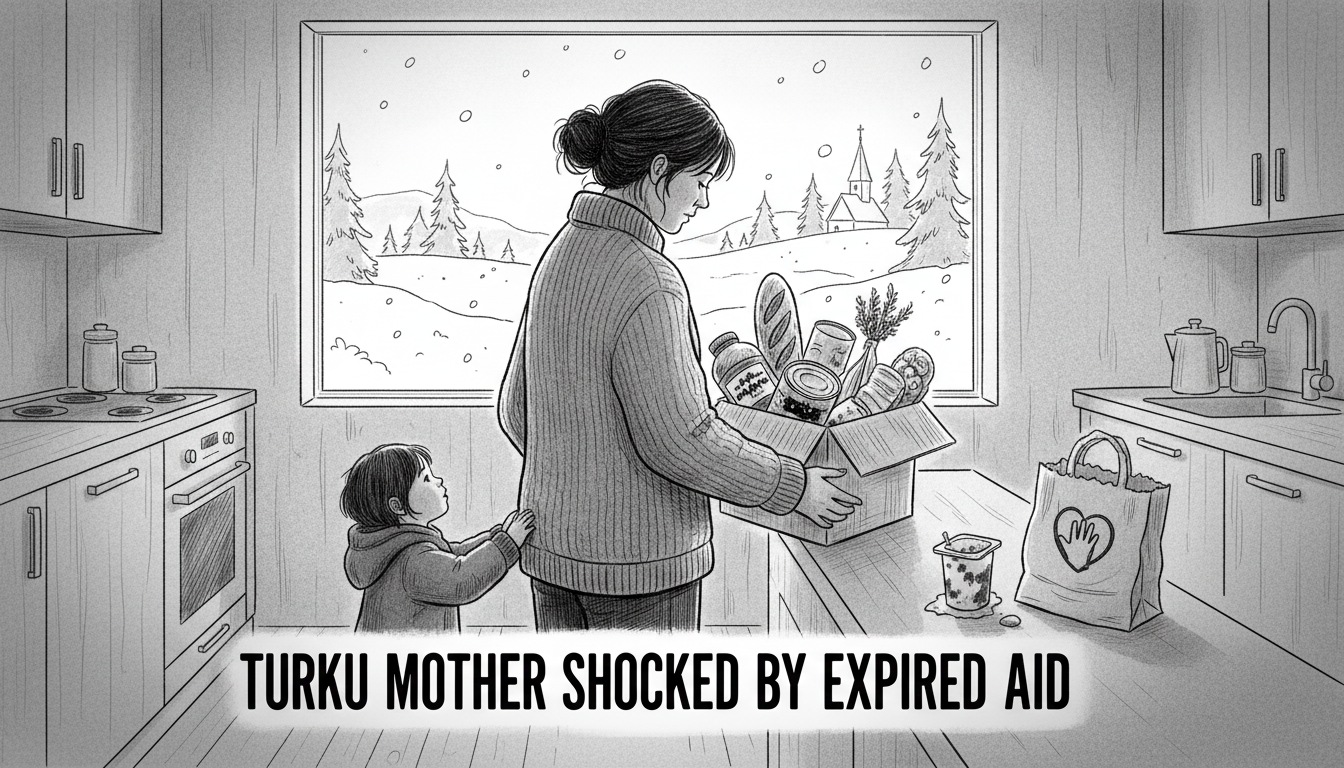A mother in Turku received inedible food items from a local assistance program. Some products had significantly passed their best-before dates, while others had expired completely.
She said the food safety risk was too great for her family. "I decided we're not hungry enough to take that risk of me or my child getting sick from these foods," she explained.
The woman received the products on Monday from Turku Street Mission's food distribution for families with children. The organization distributes food three times weekly to over 200 clients.
Ilkka Räisänen, the association's chairman, said he hadn't received complaints about product dates before. He acknowledged the distribution operates with considerable haste.
Multiple problematic items ended up in the family's bag. A sausage mash ready-meal had expired three days earlier. A protein drink's best-before date passed on September 27. Strawberries were moldy, and a sausage package had been opened with one sausage removed.
Some items remained in good condition. "The parsley looked really good, but that doesn't make much of a meal," the mother noted.
Food legislation applies equally to food aid operations. Products must not pose health risks and should maintain good quality.
According to food safety guidelines, products past their use-by dates are generally unsafe. Food aid operators can be flexible with best-before dates, but items should remain sensorily acceptable.
This marked the mother's first experience with Turku Street Mission's food assistance. She described a rushed distribution that started much later than announced.
Volunteers rapidly filled queuing customers' bags without proper inspection time. Clients could choose bread items themselves but not other products.
"This is quite miserable because there are people in worse situations who probably have to eat these since they have no other option," she added.
Turku Street Mission receives food donations from grocery stores. Sometimes products get frozen when approaching expiration, then distributed directly from freezers.
Räisänen stated customers shouldn't rummage through products but can select items from tables where they can check dates. "In that sense, it's the customer's responsibility. If they notice it at that point, they don't have to take it, and then we throw the product away."
Food safety authorities emphasize that responsibility for food safety lies with all parties in food aid operations, including donating stores and distributing organizations.
Räisänen maintains the association follows food regulations strictly. He attributed the reported issue to frequent rush during sorting and distribution.
"It's human activity - something can always slip through. We start from the premise that this won't happen, but then we need to be even more careful."
He also suggested the customer might be lying about the incident. "I take this really seriously, but I'm also presenting that other possibility."
Turku has 17 food aid operators total. This year, six inspections have been conducted at these locations. Authorities have processed 11 food aid-related notifications and 12 other contacts.
Turku's environmental health department records all contacts and notifications in their system. Supervised locations get inspected according to plans and need.
"In addition to planned supervision, the food control inspection process can also start based on a suspicion report," said Sanna Raunila, Turku's environmental health manager.
Charity food aid operations belong to the 0-risk category, so they don't receive regular supervision after the first inspection.
"After this, inspections are conducted as separate inspections if there's some specific reason, such as a customer complaint, suspected food poisoning, suspicion of legislative violation, or other food safety compromising factor."
Food aid operations cannot distribute certain hazardous products under any circumstances.
The incident highlights the tension between addressing food insecurity and maintaining safety standards in charitable distribution systems.
Food banks across Finland face similar challenges balancing donation quality with urgent need among vulnerable populations.
